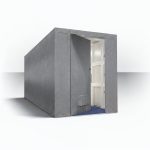The High Price of Small Leaks
A cistern that loses even a few liters a day can translate into thousands of gallons of wasted water each year, along with spikes in pumping energy, chemical treatment, and unplanned downtime for cleaning. Those secondary costs often eclipse the price of the liner itself, yet they remain hidden until a facility conducts a full life-cycle audit. Leaks also invite microbial growth, accelerate concrete carbonation, and corrode steel, turning what should be a stable storage asset into a maintenance headache. The industry’s growing recognition of these knock-on effects has accelerated interest in coating systems that eliminate seams, withstand structural movement, and preserve potability for decades rather than seasons.
Why Polyurea Addresses the Real Failure Modes
Traditional liners tend to fail at the interface between rigid and dynamic elements—think pipe penetrations, hairline foundation shifts, or temperature-driven expansion and contraction. Polyurea’s elastomeric backbone solves that problem by stretching rather than cracking when the substrate moves. It also polymerizes so quickly that it “freezes” around anchors and flanges, creating a continuous bladder that rejects water ingress even under fluctuating hydrostatic pressure. Because cure times are so short, the membrane develops early mechanical strength and chemical resistance long before ambient moisture can compromise adhesion, making it uniquely suited for humid vaults and coastal climates where epoxy cure windows are notoriously fickle.
Installation Workflow: Speed Without Shortcuts
The headline benefit, return to service in under 24 hours, doesn’t negate the need for disciplined preparation. Crews still profile concrete to a standardized texture or blast steel to near-white metal, and they confirm that moisture content and surface pH fall within manufacturer tolerances. The payoff comes after spraying: operators can measure wet-film thickness with a gauge, verify cure in real time using thumb-twist tests, and complete holiday detection within minutes of finishing the last pass. Tanks that would otherwise sit idle for days while conventional coatings harden can be back online by the next shift, giving owners a shorter outage window and contractors a higher daily revenue potential.
Regulatory and Quality-Assurance Drivers
Potable-water authorities increasingly require liners to demonstrate compliance with NSF/ANSI-61 or equivalent extraction standards. Polyurea formulators have responded with polyurea cistern liner systems that pass these tests without sacrificing elongation or bond strength. Meanwhile, insurance carriers and asset managers are adopting more rigorous inspection regimes that include adhesion pull-tests and dielectric holiday detection, methods that pair naturally with polyurea’s rapid cure. These compliance forces are nudging specifiers toward materials that can clear laboratory hurdles and on-site QC in the same maintenance cycle, positioning polyurea as an attractive “one-and-done” option.
A Strategic Growth Avenue for Coating Contractors
For applicators already versed in plural-component spray work, like truck bedliners, secondary containment, or geomembrane repairs, cistern projects are a logical extension. The skill set and equipment overlap is high, but end-use clients often allocate larger budgets and hold fewer price-focused bidding wars than their automotive counterparts. Startup costs center on tank-cleaning gear, confined-space safety training, and potentially a higher-output proportioner; beyond that, the revenue curve can scale quickly because each project covers hundreds to thousands of square feet. Contractors who document cure profiles, film builds, and QC tests position themselves not merely as installers but as long-term partners in water stewardship.
Looking Forward: Incremental Innovation With Outsized Impact
Polyurea chemistry continues to evolve along three practical fronts. First, low-VOC resin packages are entering the market, helping facilities meet tightening emissions rules without adding ventilation complexity. Second, pigment-stabilized aromatic blends are closing the UV-resistance gap with aliphatic systems, offering cost-effective solutions for cistern tanks that experience intermittent sunlight. Third, smarter proportioner controls now log real-time pressure, temperature, and flow data, producing digital quality records that inspectors can audit months or years later. None of these developments overturn the fundamentals, but together they make polyurea easier to specify, apply, and defend in boardroom budget discussions.
All together, these trends point to a future where polyurea transforms cisterns from leaky liabilities into dependable, auditable assets—a future that owners, regulators, and forward-thinking contractors can start building today.






